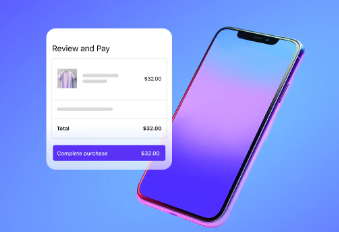More than two-thirds of Internet users leave a website because of a bad user experience, a fact that alone expresses the importance of this parameter in the performance of a digital strategy. It also helps to explain why, in recent years, UX (an acronym for User Experience) has been on everyone’s lips.
Moreover, the digital economy does not have a monopoly on the user experience. In many fields, UX is an essential aspect. Improving the customer experience is not only a lever for growth as old as commerce, but, above all, it does not alone cover the full scope of the user experience, of which it is only one aspect. Ergonomists work, for example, on optimizing interfaces or environments to optimize the comfort, health, or productivity of users who are not strictly speaking customers…
It is therefore very difficult to define the notion of UX and even to limit it to a unified area of expertise.
We have therefore chosen, in this article, to focus on the importance of UX as part of a digital marketing strategy. It is in this context that Ad Premier addresses the daily user experience to boost the results of the agency’s clients.
Summary
- The “UX” surge that transformed the economy
- The weight of responsive in the era of “mobile first”
- The impact of user experience on SEO
- UX and online advertising: an often-overlooked relationship in web marketing
- UX and brand image: the global approach that pays off
- Frequently Asked Questions
- What is UX and why is it important for your digital strategy?
- How to improve the UX of your website or application?
- What are the benefits of a good UX for your business?
The “UX” surge that transformed the economy
For a good decade, UX has become an axis of development in more and more sectors of activity. Of course, we talk about it more than ever in the world of online business, but it’s an aspect that software developers, physical stores or even designers of all stripes have known for a long time.
Today, we are even interested in UX in museums and other places intended to welcome the public or in the HR departments of large groups.
In fact, this rise in power of the user experience is the sign of a gradual reversal of the paradigm. Where we expected the user, 20 years ago, to adapt to a product or service optimized to perform a function, today we expect that the optimization of this product or service also integrates adaptation to the user.
Clearly, the user has been put back at the center of the economy; which opened a royal path to all UX design professions.
In the field of online business, this focus on the user has made UX one of the areas of development that generates the most profitable investments. A well-known American study by specialists in the matter thus asserts that $1 invested in UX yields between $2 and $100, or 100% to 9900% ROI.
Only the user experience makes it possible to create such a performance lever and, in return, even an acquisition at the top of the state of the art cannot do much if it leads to a site whose user experience is faulty.
The weight of responsive in the era of “mobile first”
As a mobile user, you may have experienced the frustration that a page that displays poorly because it is not adapted to this navigation device can generate. Turns out you’re not alone, as it’s estimated that optimizing a page for mobile browsing that isn’t optimized results in a 50% drop-in bounce rate on that device and a 30% increase in conversions (when that page targets that goal).
However, a 2020 Hootsuite/We Are Social study revealed that, at the end of 2019, mobile internet connection time had for the first time exceeded half of the total connection time. And this trend of “mobile first” should not go down since it is sometimes announced that the bar of 60% of connection time on mobile phones will be crossed by the end of 2021.
Today, achieving good performance in digital marketing without having a “mobile-friendly” site is increasingly complicated.
Moreover, an infallible indicator of the weight that the mobile has taken in the digital world is the implementation of Google’s “Mobile First” index.
The impact of user experience on SEO
Since the completion of this project in April 2021, on 100% of sites, Search Engine Optimization (SEO) robots examine the mobile version before the desktop version.
In fact, before even thinking about the quality of the navigation that you offer to your visitors to your site who connect to it on mobile, you must already optimize this navigation to be well referenced with your potential visitors.
After first announcing the full deployment of this new Mobile First index for September 2020, Google had finally decided to give website owners a few more months to comply with the announced requirements. But this deadline has now passed and the directives mentioned for months are in application.
Responsive design, data-saving pages, facilitation of mobile indexing at the “robots.txt” file level and other goodies to facilitate mobile browsing are therefore an integral part of natural referencing in 2021. Moreover, some sites that were not in the nails have already started to lose positions and therefore traffic.
But regular readers of our blog know that the integration of UX into the new concept of SEO that Google wants to impose is far from being limited to mobile-first. Our article on Google’s May 2021 algorithm update detailed the consequences of the “Google Page Experience” approach endorsed by this update.
To know these details, do not hesitate to refer to the article. Here, we will simply recall that Google has officially announced that user experience criteria are appearing in its algorithm.
Among these criteria, there are some that were already known (without being officially taken into account), in particular in terms of responsive design, navigation safety or the use of pop-ups, but above all there are three new, more technical ones, which have been giving many webmasters nightmares for the past few months. These are the criteria linked to the famous “Core Web Vitals” project.
Admittedly, we do not expect too repressive application of these new directives, but we have to admit that UX is repositioning itself at the center of SEO.
However, the SEA is not left out on the issue either…
UX and online advertising: an often-overlooked relationship in web marketing
In fact, that advertising maintains a strong link with the consumer experience should not surprise many people. However, when they switch to online advertising, many advertisers lose their good habits with regard to UX or, rather, they do not adapt them to the digital practices of the consumer.
As Internet users are now bombarded with advertisements in all environments of their online experience, it is more important than ever for advertisers to integrate this experience into Ads strategies.
In Display, for example, some ad formats that are too intrusive have seen their performance deteriorate in recent years. These are formats that disrupt navigation, such as certain pop-ups, certain auto-playing videos or full-screen formats. All this is not necessarily to be banned, but to be handled with extreme caution.
Moreover, in SEA as in Social Ads, precise targeting is essential for a good user experience. Going too quickly on this step would inevitably reduce the impact of your Content Moderation, but would also risk be degrading your communication as a whole. And for good reason, UX has become an essential aspect of brand image in the broad sense…
UX and brand image: the global approach that pays off
The friction that arises while browsing a web environment whose UX has not been optimized can taint the brand’s entire communication strategy. At a time when the players most experienced in this exercise adjust the smallest detail to adapt to the practices and needs of their target, those who do not find themselves automatically relegated to the second division.
A form that is too extensive, a value proposition that is difficult to identify at first glance, a laborious checkout, practical information that is difficult to find: the slightest flaw in a website is likely to reduce the quality of the user experience and therefore commercial performance.
When we know that nearly half of visitors leave a company’s site if they can’t find contact information there, we can measure how much these seemingly innocuous details weigh in on the success of a digital strategy.
As a company, your user experience is the interface between your offer and your market. Optimizing every aspect of this interface necessarily boosts your ability to persuade your target to trust you.
Ultimately, there is no secret: if UX is so important in a digital strategy, it is because it represents the most powerful performance lever. More than a lever, it is even a total approach to web marketing, which indexes performance on knowledge of the target. Getting to know your target to best meet their expectations, both in terms of navigability and in terms of the quality of the information provided, the targeting of your ads or the accuracy of your commercial offers: this is the best way to increase both your volume of customers and the Life Time Value of these customers.





